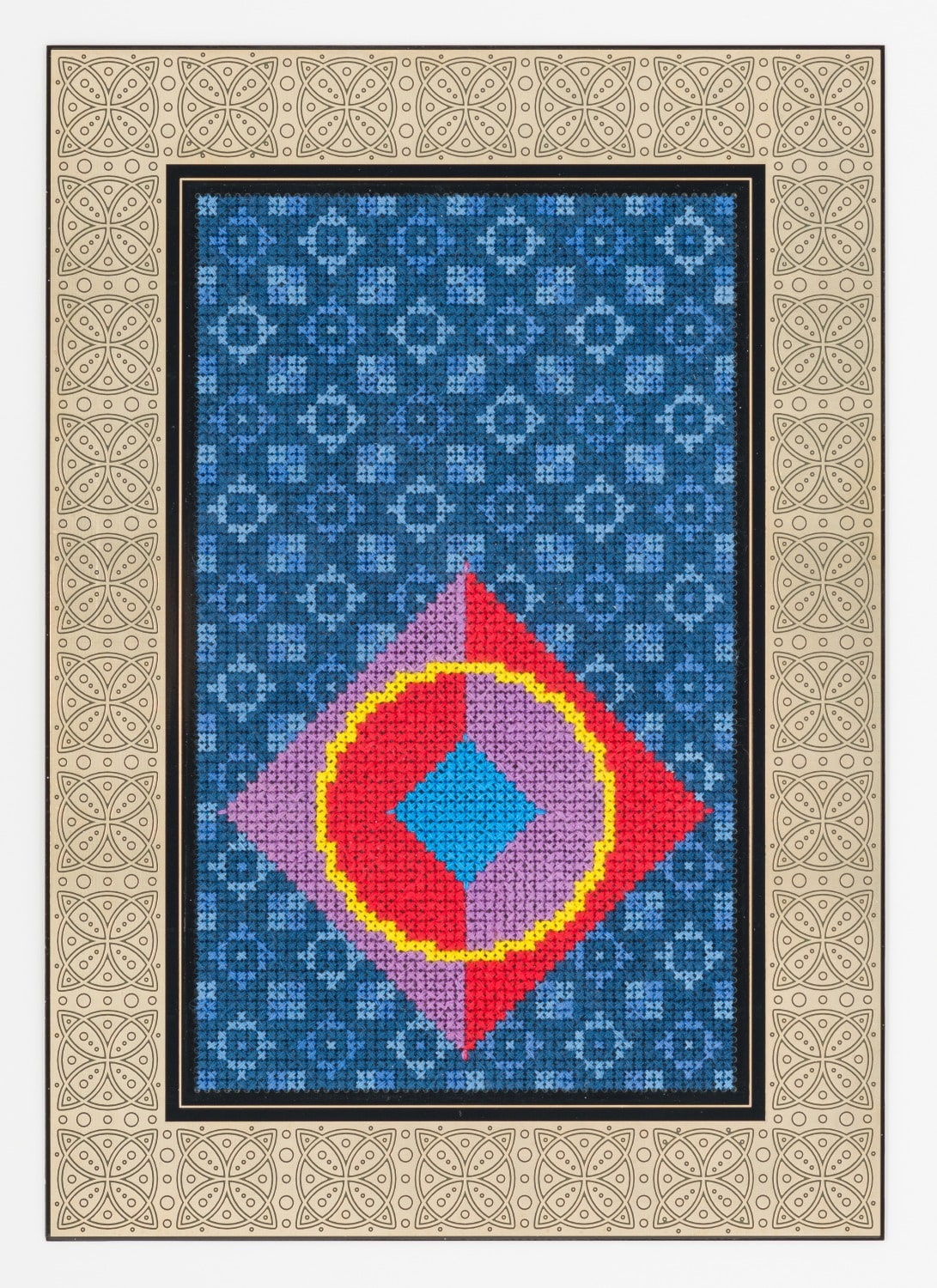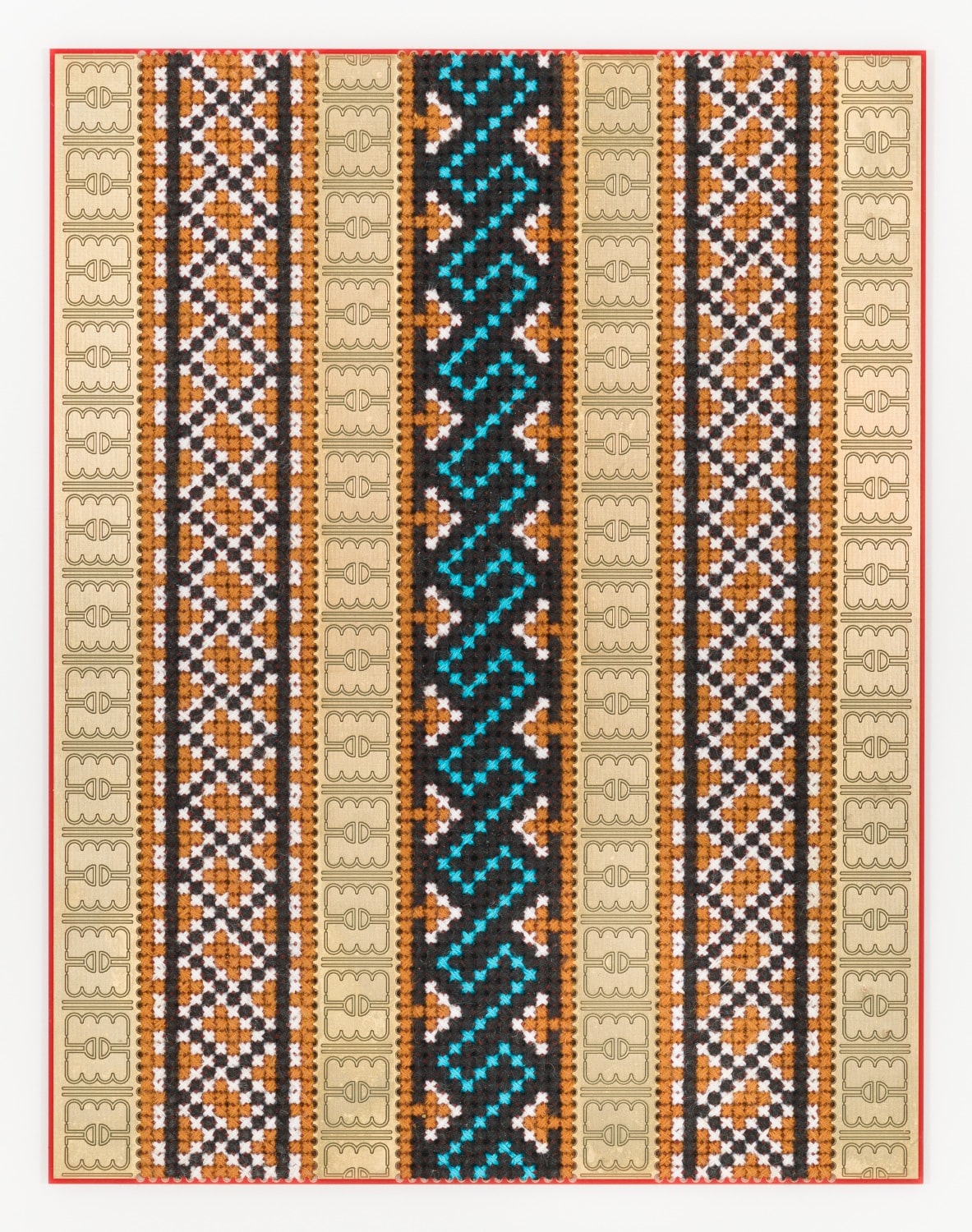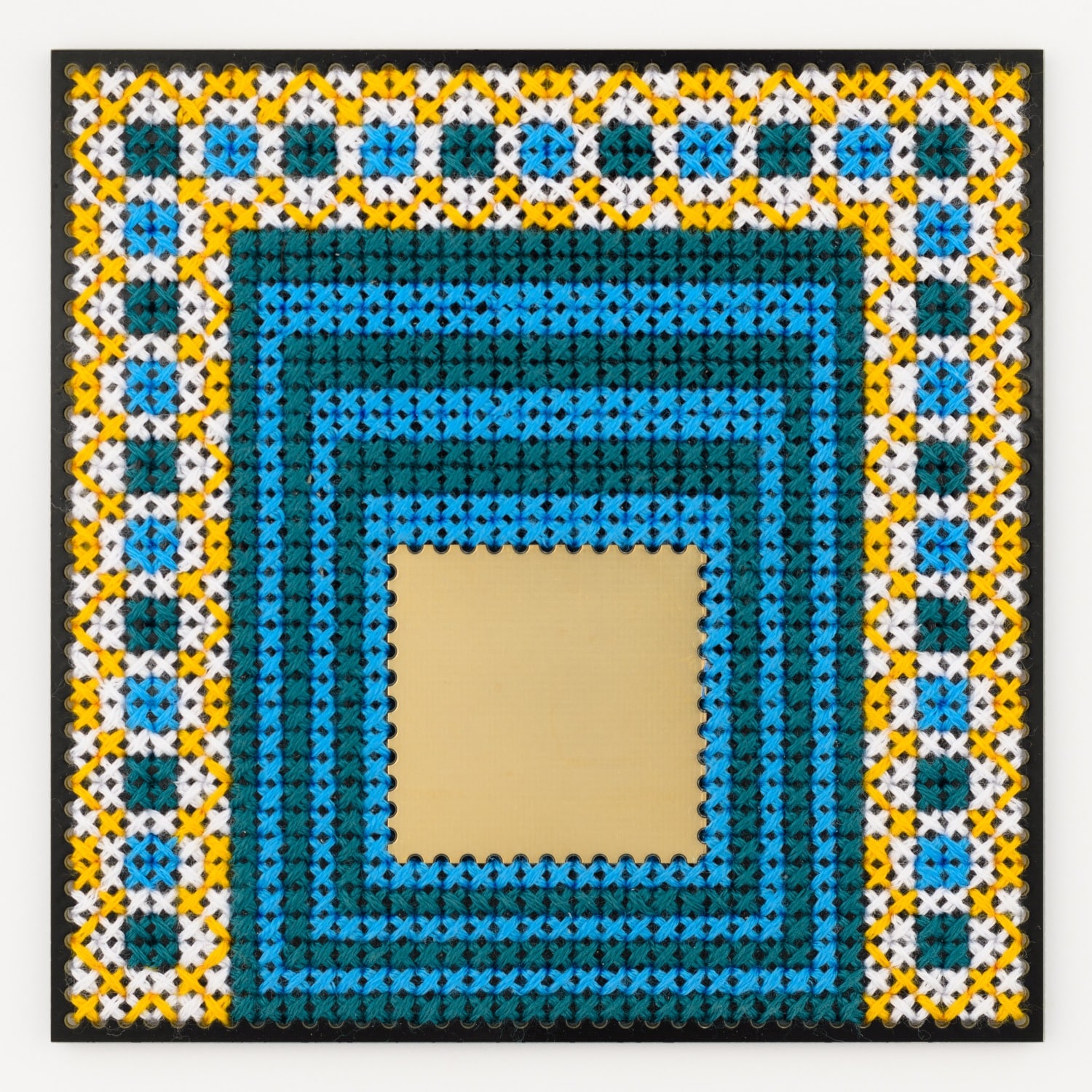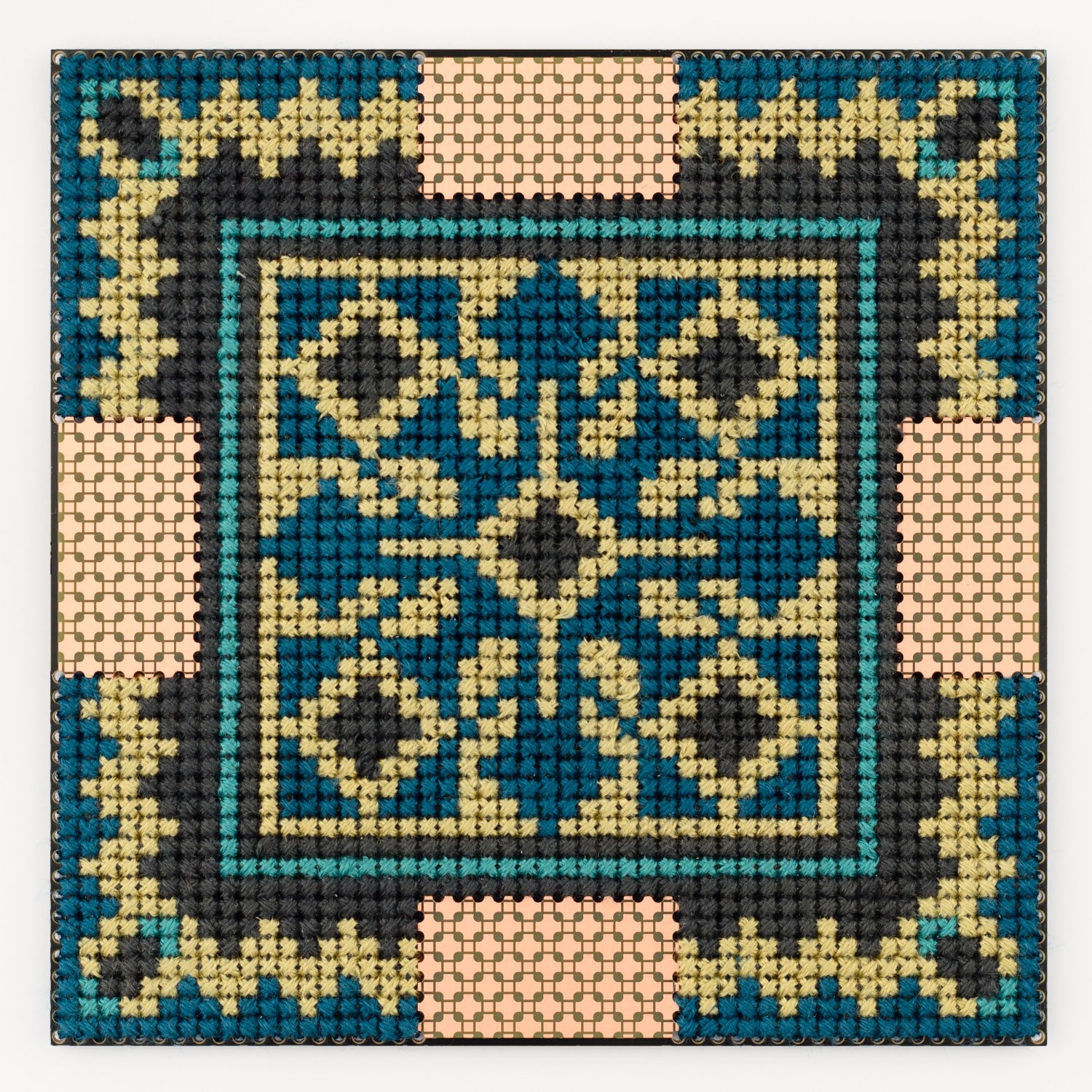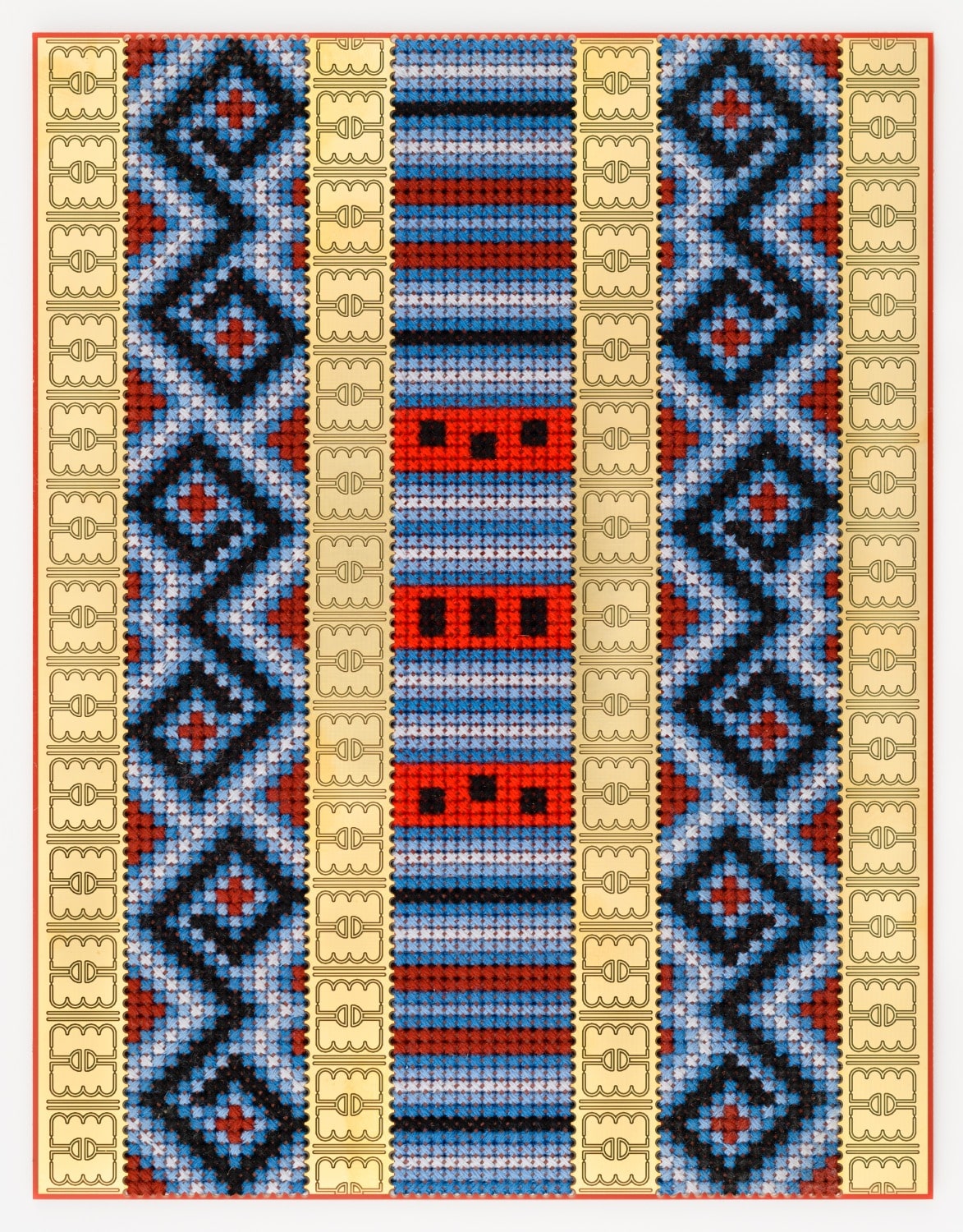
Technological products become obsolete at an increasingly rapid pace; throughout my career as an engineer, I have seen my share of technologies come and pass. My artistic work uses these objects in ways they were not mass-produced for, emphasizing their physical beauty. Created by employing printmaking, drawing, and painting techniques, these works allude to serial design, issues of consumption, and automated vs. labor-intensive processes.
By using scientific concepts culled from my engineering background, as well as strategies such as scale distortion and time scaling, my art places these objects in new and atypical historical contexts. For example, electronic circuit boards become classical portraits and their shape inspires topological maps; their computer models become weavings illuminating the connections between electronics and textiles; scientific research papers become illuminated manuscripts; and the manufacturing process of circuit boards is used to create limited editions akin to traditional printmaking.
My works are not making the case to preserve these technologies. Using them in my artworks constitutes an homage to the countless hours engineers like myself have spent in designing these products with such short life spans. In addition, the very slow process of creating these artworks entirely bypasses the inherent speed and precision of everything electronic and new, thus transforming disregarded objects into a meditative experience. Engineering makes it possible to build extremely fast technology that works effortlessly; engineering is also successful when it’s possible to ignore its complex creation process. My artworks urge people to appreciate all this hidden technology not only as something utilitarian, but also aesthetically, and to reconsider the speed of life these electronic products enable by placing these electronics on radically different time scales.


